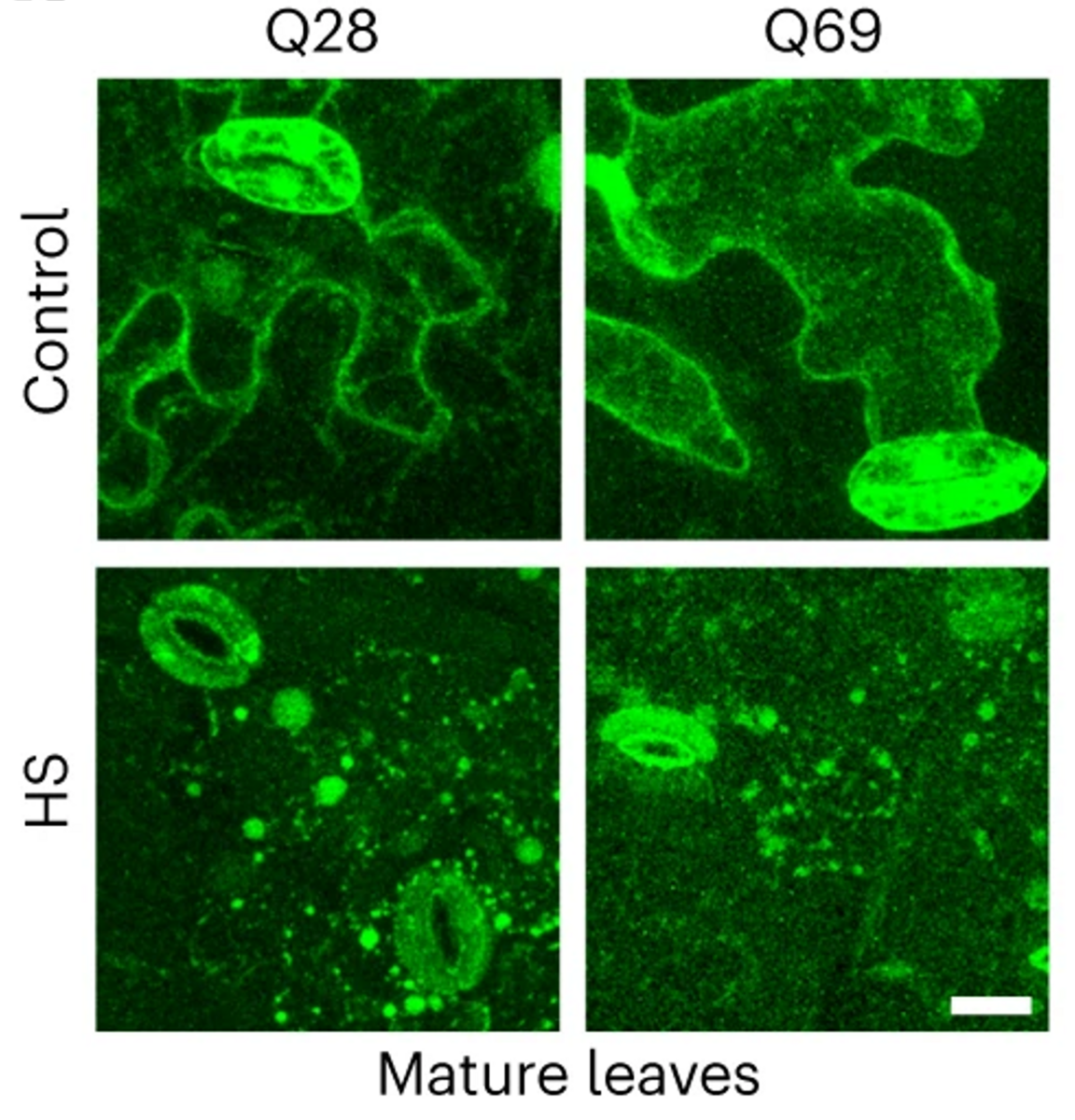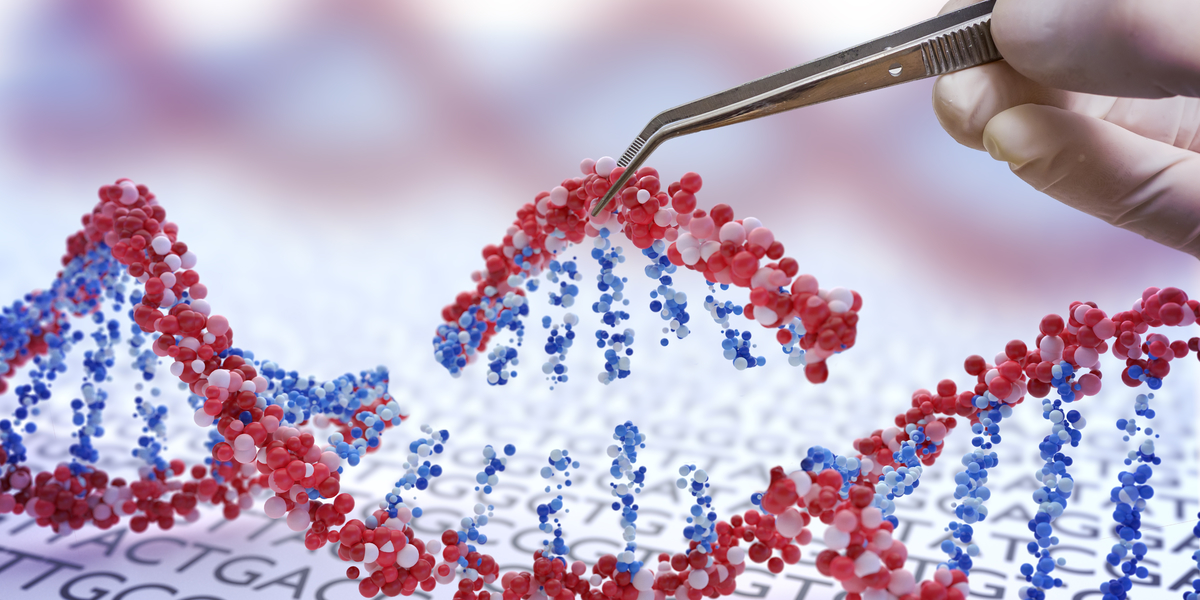Getting to the Root of Huntington's Disease: A Plant-Based Approach
Researchers used plants to study how to stop the Huntington’s disease protein from forming toxic clumps
By Dr Rachel Harding October 15, 2023 Edited by Dr Leora Fox
Researchers studied a fragment of the Huntington’s disease (HD) protein in plants and found a new way to stop it from forming toxic clumps. A special plant protein that the team identified can prevent harmful buildup in plants as well as in some HD model systems, showing potential for this approach as a possible way to treat HD.
Why study HD in plants?
Plants are stuck in their environment, literally rooted to the ground, which means they cannot move if they start to experience challenging conditions such as too much sun, freezing cold or pesky predators. To help deal with the environmental troubles they can experience, plants have evolved all kinds of nifty ways to cope, which can make them very resilient to stress. Many plants can also live an extremely long time, so some scientists believe they might hold the key for studying and finding new medicines for human diseases of ageing.

HD is caused by an expansion of the number of CAGs within the huntingtin gene, which means that an expanded form of the huntingtin protein is made. The expanded huntingtin protein can form clumps, and scientists think these may cause all kinds of stresses in our cells, contributing to the signs and symptoms of HD. In this study, a group of researchers from Cologne, Germany wanted to investigate whether the resiliency of plants could be extended to dealing with stress caused by toxic clumps of the HD protein.
Plants making the HD protein grow normally
First, the research team made specially modified plants which artificially make a fragment of the HD protein. They grew some plants that had a very long CAG repeat which might be found in a person with juvenile HD (69). They also grew plants to compare them to, which had approximately the longest CAG repeat number that exists in any plant protein, but would not be likely to cause HD in humans (28).
Under normal conditions, they found that these modified plants making the HD protein grew almost exactly the same as plants without the HD protein, and that no protein clumps formed in the plant cells. They also checked that making the HD proteins did not trigger any of the stress response systems in the plants. However, if they subjected these plants to additional stress, such as high heat conditions, then they saw toxic clumps form for both forms of the HD protein.
HD proteins communicate with the cell’s cleanup system within chloroplasts
Unlike human cells, plant cells have special compartments called chloroplasts which are responsible for capturing light so the plants can make food and grow. Contained within the chloroplasts are lots of specialist bits of cell machinery, that keep protein levels in balance and clean up damaged or toxic proteins, so that energy and growth stay on track.
The scientists found that these clean-up machinery assemblies had a lot of contact with expanded HD proteins, and they could see this contact happening both in chloroplasts as well as other parts of the plant cells.. In particular, there was contact between the HD protein and an enzyme called SPP which chops up other proteins during the clean up process.
Using microscopes, the team looked at the location of the HD protein within the plant cells. They could see lots of the HD protein surrounding the chloroplasts, suggesting that these special structures may help the plant to deal with the stress of making the HD protein.
Messing with the chloroplast’s job makes HD protein clumps pile up
The research team then looked at how chloroplasts process the HD protein. In their studies, they saw that chloroplasts were able to take up the HD protein when it was floating nearby, and then remove it.

They then wanted to see what would happen if they stopped the chloroplasts from cleaning up proteins or from shuttling molecules in and out. They used different chemicals to disable the chloroplasts in these ways, and In both cases, the plants showed a buildup of HD protein and potentially harmful clumps. This provided even more evidence that the chloroplasts were very important in dealing with the HD protein.
A new way to decrease HD protein clumping
The SPP molecule can help with protein cleanup in plants, and it was found in contact with the HD protein. So could SPP help deal with HD protein clumps in other contexts - like in cells grown in dishes, or in an animal model of HD?
In the final part of the study, the scientists added the SPP gene in different models of HD to see what would happen to the HD protein. They first looked in human cells in a dish, and found that SPP stopped the build up of HD protein clumps.
Finally, they engineered microscopic worms to make the HD protein, with or without SPP as well. The worms with SPP had a lot less HD protein clumps and could move around better than those without it.
What does this all mean and what’s next?
It’s likely to be a long road before folks with HD are being dosed with SPP to treat symptoms. However, the research team behind this study believe that by researching plants, which can endure harsh conditions causing protein clumping, they might find even more valuable insights for treating human diseases.
This innovative, and slightly wacky, plant-based approach could hold promise for advancing possible new treatments for diseases like HD.


